Hey you! Have you been feeling a bit sober curious, lately?
The chances are that you have been. More and more folk are considering cutting out alcohol completely or severely curtailing their consumption.
Some say it’s the young who are turning the tide but the stats show it’s not just the younger, wiser, generations, who don’t perceive alcohol as a prestigious rite of passage. The whole idea is being rethought by everyone alive to get drunk.
According to Gallup, the percentage of U.S. adults who say they consume alcohol has fallen to 54%, a new low, and 66% of 18- to 34-year-olds now believe drinking is bad for your health, even in moderation.
It’s no surprise that sales of alcohol free beer have been soaring, then. According to IWSR, non-alcoholic beer is projected to soon overtake ale as the second-largest beer category by volume worldwide, and non-alcoholic beer volumes in the U.S. alone increased by 23% in 2024, making it the fastest growing beer segment.
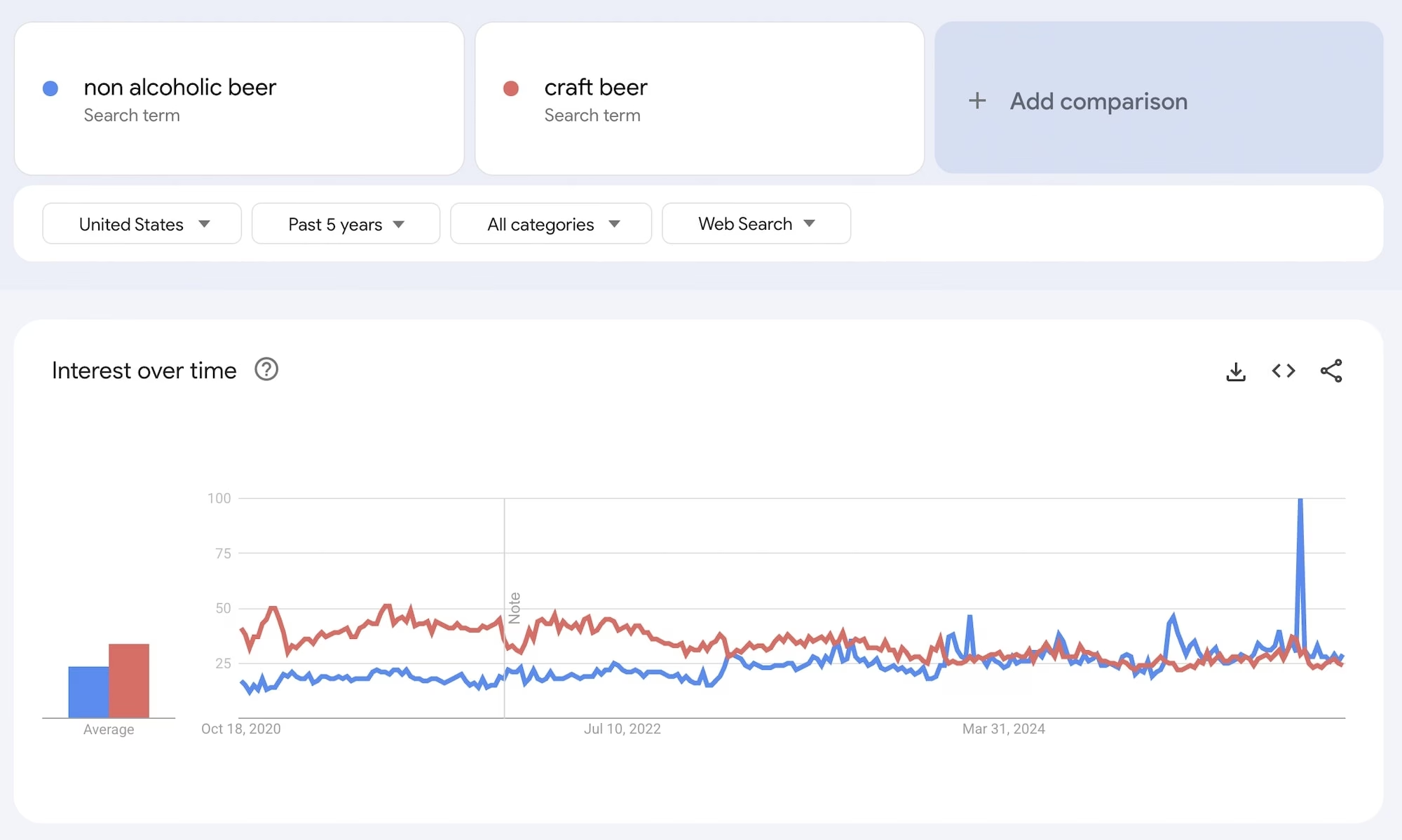
With the rise of beer that isn’t so hazardous to your wellbeing, we thought we’d compare non-alcoholic beverages to alcoholic ones, side by side, with a view on the other attributes apart from the clear alcohol difference.
What do we mean by ‘regular’ beer?
Beer. The beers, ales, lagers etc. that have been imbibed since BCE, or enjoyed in Ancient Rome, before getting fizzed-up in the 18th century. These popular drinks are made from grain and hops that have alcohol in them from the fermentation process. Typically around 4-6% ABV.
Think of a classic, cold Heineken lager.
Fun fact: the most popular alcoholic beer on the market is allegedly one you might not think of: Snow, which is mainly drunk in China.
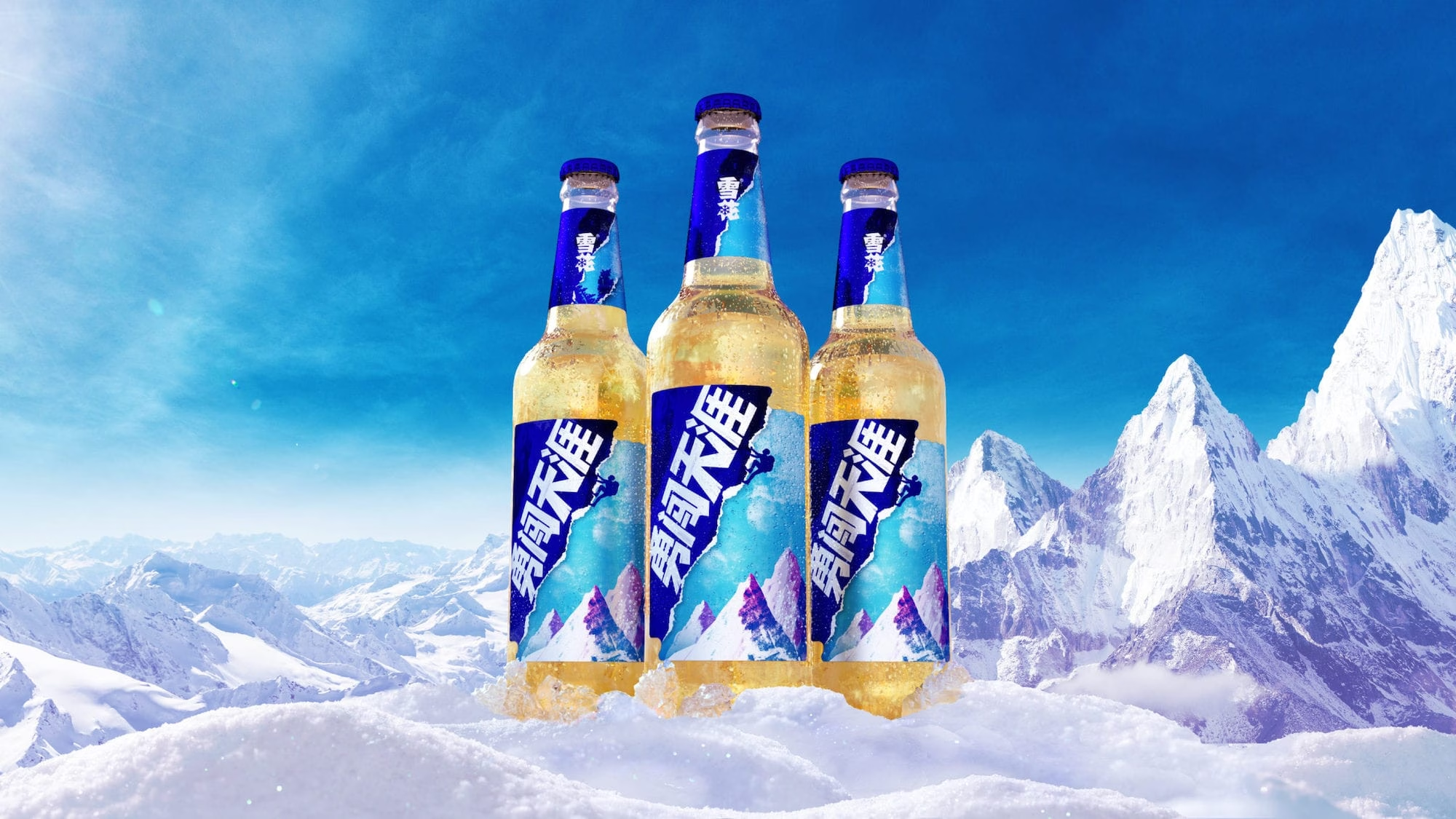
What do we mean by non-alcoholic beer?
Beer. This time with alcohol removed and attempts to replicate the flavoursome notes that alcohol provides. The method is complicated but, in short, the alcohol is evaporated out of the brew using heat, often under a vacuum to protect the flavor.
The classification is also a bit complicated and it can vary by country. Not all beers billed as alcohol free are entirely free from alcohol. Many ‘non-alcoholic’ beers still contain alcohol up to 0.5% in some countries, like the UK and U.S.
If you’re looking for even less alcohol, beers marked as zero alcohol or 0.0% tend to be the lowest at 0.05% ABV or less (though this term’s limit varies by country too, with 0.05% being a common strict threshold). If that still sounds misleading then remember that fruits like very ripe bananas have even more alcohol than that. Could you get drunk by eating a load of very ripe bananas? We’ve not tried but you probably can.
Now let’s take a look at how NA beer compares to regular beer across five key areas,:
Wellbeing
Health is not a typical or even sane reason to drink beer but surprisingly, in moderation, beer has some health arguments in its favour.
Consider the oft-cited view that red wine is good for you because it’s full of antioxidants and can lead to better heart health if drunk in moderation. Well, the antioxidants in beer may be different from those of wine – derived from malt and hops, not grape skins – but beer is said to contain almost as many antioxidants as red wine does and more than white wine. Like wine, darker beers can be healthier than lighter ones.
Beer is also rich in B vitamins. But the big caveat is that while some studies show the benefits of drinking beer sensibly, other recent studies have shown that no level of alcohol consumption is good for you. Take a 2024 study published in the Journal of the American Medical Association, which found that even moderate alcohol intake was associated with a higher death rate – particularly from cancer and cardiovascular disease – among older adults. Some global health organizations, such as the World Health Organization (WHO) and the Canadian Centre on Substance Use and Addiction, have recently stated that no amount of alcohol is truly safe for health.
Alcohol-free beer solves that problem and it retains the same antioxidants as classic beer. The beneficial compounds aren’t reduced by the brewing process because alcohol is removed. So you still get the benefits. With fewer calories. With a bit more sugar, we might add, but if that’s a concern then just select a lower-sugar version and remember that the amount of sugar in a typical NA beer is about 8-10 times less than a fizzy beverage like Coke. Or Monster.
Alcohol free beer is clearly better here. And if you choose a low sugar version then it could even be considered a semi-healthy thing to drink, if you only have a few. And only having a few is kind of the point.
Taste
A tricky issue for NA beer is that the trademark flavour of beer comes from what’s being removed: alcohol.
Inconvenient. Still, pioneering brewers are finding ways to closely mimic the taste of classic beer and replace the flavoursome aftertaste of alcohol. The alcohol-free beers of yesteryear are now staggeringly good.
While the flavour is close, many alcoholic beers do still lack the singular taste of a refreshing, classic beer, with a strange aura of sweetness in many offerings instead of the subtle bite of bitterness. But there is massive variability and you can enjoy alcohol-free beers that are almost indistinguishable from the real thing – especially if you take away the psychological effect of knowing what you’re drinking. In recent blind taste tests, NA beers have been judged to be robust, real-deal beers. It’s getting harder to tell the difference.
What’s our experience of all this? Well, our recommendation on lager is either Heineken or Peroni 0.0% beers if you’re looking for a lager beer that tastes closest to the ‘real’ thing. But we’re not connoisseurs and there are so many new entrants to the market, especially on the ‘craft’ side.
In such an effervescent scene, it’s not a bad idea to check the awards. You might want to look at Athletic Brewing Co. Run Wild IPA, Samuel Adams Just the Haze or Juicy AF by Only With Love, all of which have won recent major awards.
The beers of tomorrow will taste even more like beer.
Environment
We know sectors like fashion are bad for the environment but what about beer?
The beer industry’s environmental footprint is driven by three main factors: water use, carbon emissions, and packaging. The brewing process is notoriously water-intensive, requiring, on average, many liters of water to produce just one liter of beer (as high as 155L overall, in one study). Not only that, the cultivation of raw materials like malted barley contributes to GHG emissions and can strain agricultural resources. Then, there’s the energy-intensive process of fermentation, and the transport and refrigeration of the final, heavy liquid. All of this adds up.
Alcohol-free beers largely share this footprint, as the initial brewing process – the most water-intensive part – is the same. However, the key difference lies in the de-alcoholization step. While innovative new techniques are emerging, the most common methods for alcohol removal often require extra energy (usually heat, even under a vacuum) or specialized filtration equipment, which can marginally increase the carbon footprint compared to a classic beer that simply finishes fermentation and is packaged.
Any differences in the supply chain for flavorings or additives used to compensate for the lost alcohol taste could also slightly shift the overall environmental impact. On the upside, there’s no major environmental gain or loss from removing the alcohol but also no significant reduction in the primary impacts from water and packaging. Therefore the environmental cost is nearly identical, perhaps slightly higher for NA beer due to the extra processing steps.
Nevertheless, if you consider the impact is multiplied by the amount of beers you have and that alcohol-free beer isn’t as moreish as typical beer. Your per-session footprint – or PSF, as we’re calling it – could be lower. Two beers has a lower impact than ten.
With packaging, there’s a big shift away from using plastic, towards biodegradable and compostable alternatives to hold beers together – whatever type you’re drinking. And that can only be a good thing to combat plastic pollution. On this side, there’s also something to be said for smaller, mission-driven brewers who’re creating alcohol-free drinks, they tend to be more inclined towards innovative sustainable packaging and brewing processes.
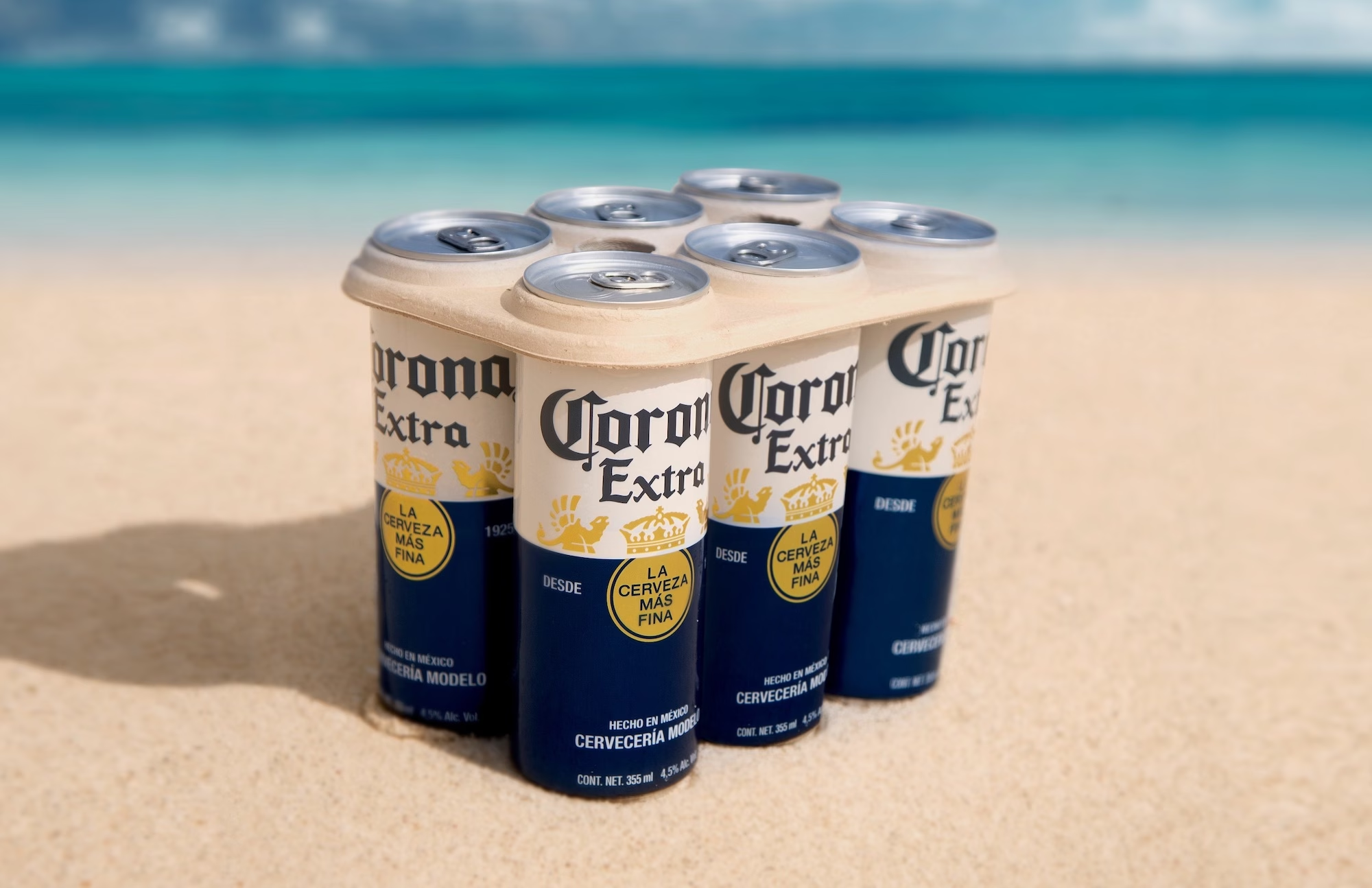
Affordability
With alternatives, it’s often the case that they end up being more expensive than what they’re mimicking. Think of plant-based meat, or luxurious alternative leathers. It can be a little jarring to pay more for what feels like an imitation product.
Not with NA beer though where there are marginal cost savings
This is due to there being no duties on non-alcoholic beer in most countries. But those cost savings are balanced by the increased costs of innovating NA beer to taste just like the real thing. That’s why the price difference is slight.
Let’s take a real-world example from one of our favourite varieties, thus far. Heineken 0.0%, costs £12.75 for 12x330ml bottles at Tesco. That’s £1.25 cheaper than 12 of the alcoholic ones at £14. Heineken is also one of the more expensive varieties. 12 Free Damm beers will set you back less than 10 EUR in Spain.
In sustainability we’re used to seeing alternatives that are priced at a premium. It’s a paradox because these alternatives can’t make any impact if they’re only a fancy dalliance – enjoyed by the loaded.
Refreshing, on this side.
Industry Size
The alcohol-free beer market is absolutely booming. In 2024 the global market was worth about $21 billion and is projected to more than double to reach roughly $44 billion by 2034, defying those drinkers who might call-out a faddish health craze. Globally, non-alcoholic beer volume grew by 9% in 2024, even as regular alcoholic beverage volume saw a slight decline. In the U.S., the category is running wild, with its volume increasing an astonishing 175% between 2019 and 2024.
But David vs. Goliath, this is not. The big multinational brewers are happily jumping on the NA bandwagon and brewing NA beers. The biggest selling alcohol-free beer globally is Heineken. The Boozy Goliaths are at an afterparty with The Sober Davids – with sensible young David ensconced in the VIP section.
Craft breweries are an important part of the market though and often make some of the finest elixirs – like Athletic Brewing Co.. whom we mentioned earlier and were only founded in Connecticut in 2017, less than a decade ago. Since then, they’ve grown to become the largest non-alcoholic brewery in America and a top-20 U.S. brewery overall (by volume, as of late 2024), with a valuation of around $800 million and a market share of about a fifth of the non-alcoholic beer category. They have also expanded to operate bi-coastal breweries in Connecticut and San Diego.
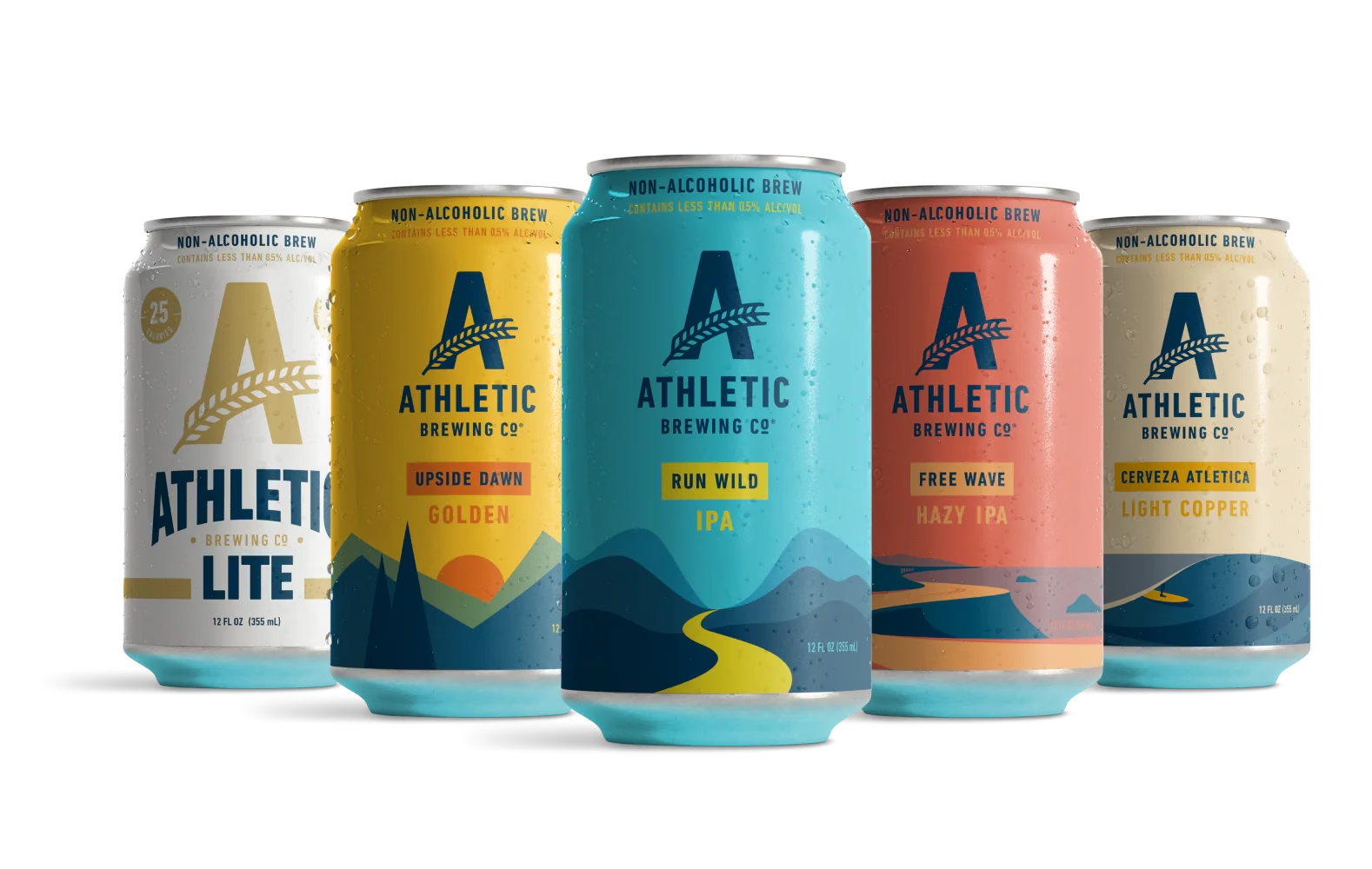
Wherever this trajectory goes, we’re looking at anything but a fad. Some onlookers have even suggested that alcohol’s days are numbered.
Last orders at the blog
Time’s up but right now, there are some compelling reasons for a switch to alcohol-free booze. It tastes pretty good, costs a bit less and, if you’re someone who struggles to stop at a few, then your mind and body will thank you. The environment, however, isn’t something you’re going to make a clear impact on. For that, you might be better off drinking tap water.
Cheers.
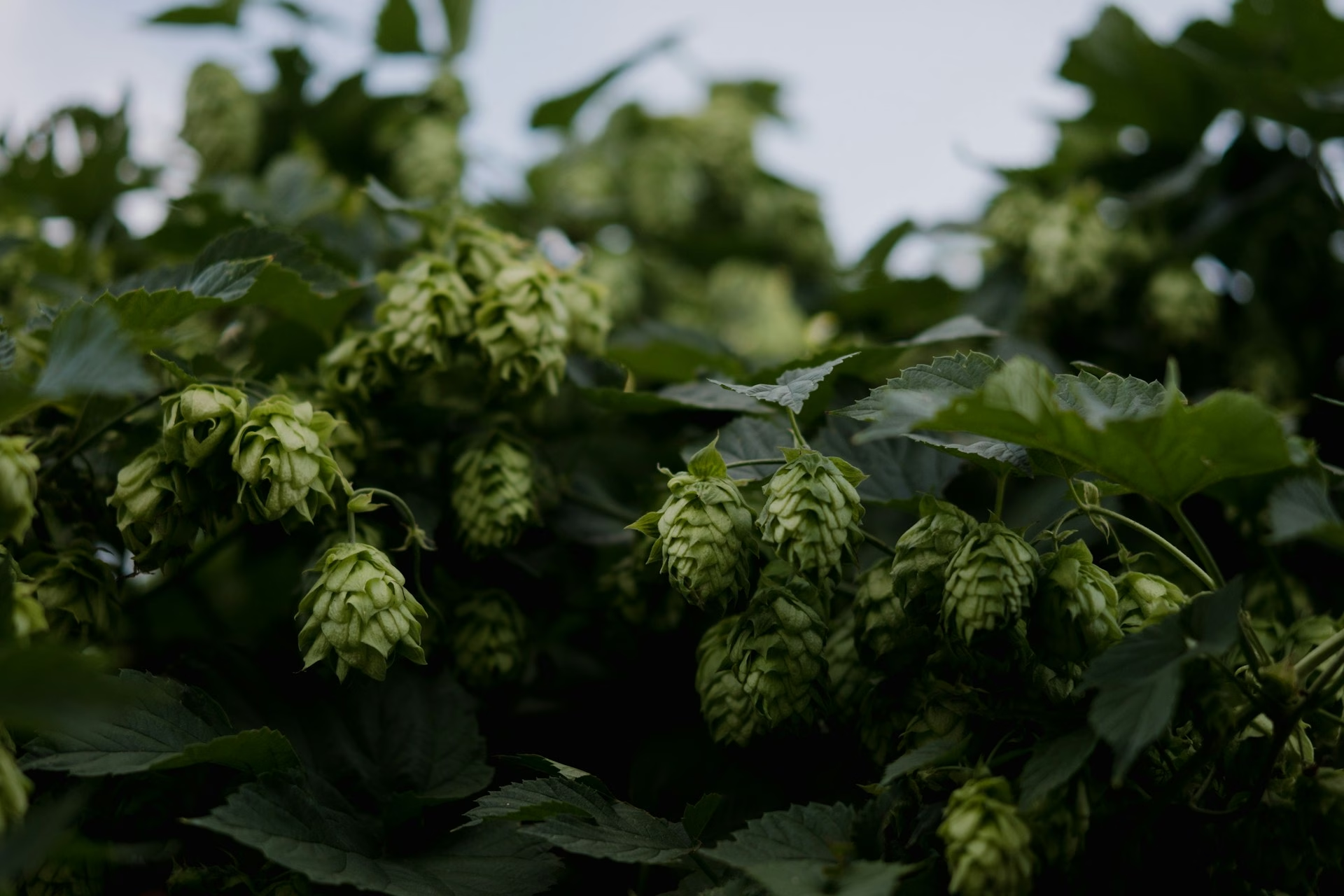


Leave a Reply